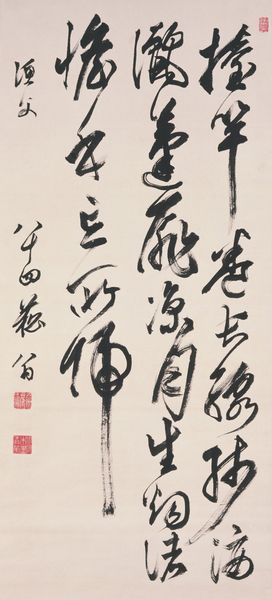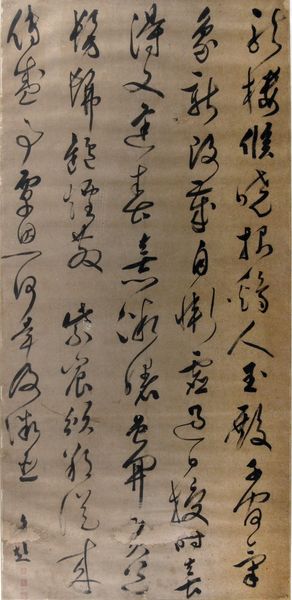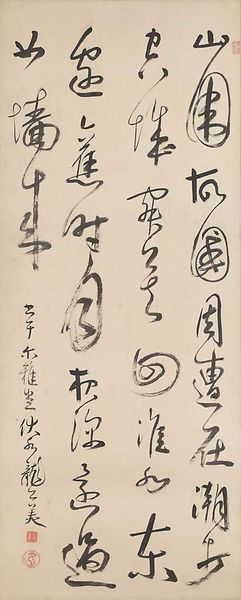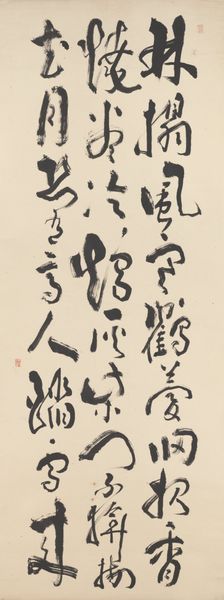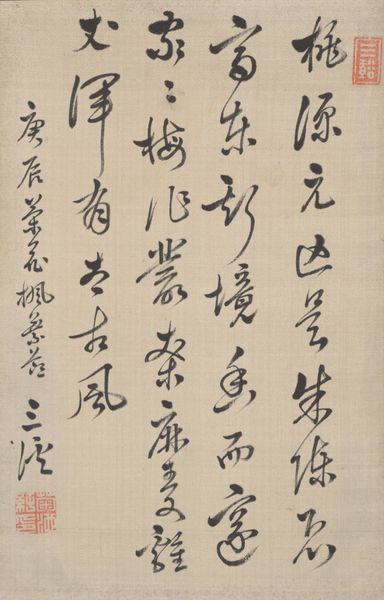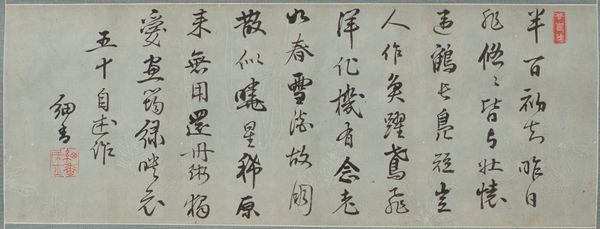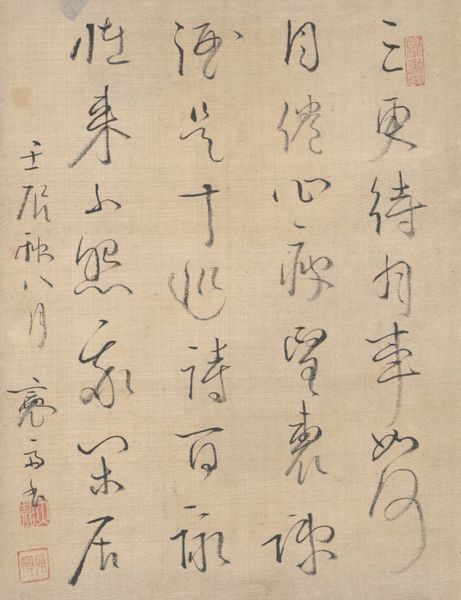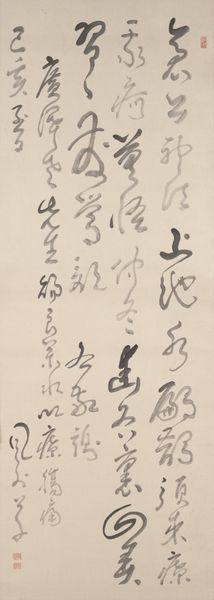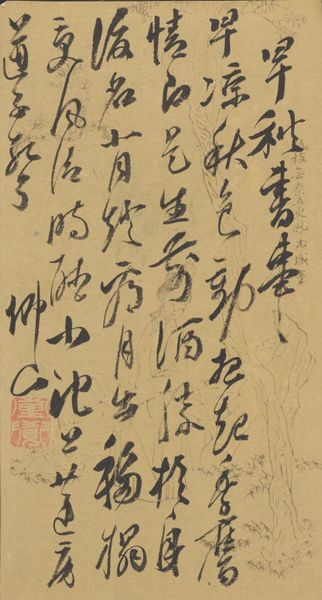
drawing, paper, ink
#
drawing
#
asian-art
#
paper
#
ink
#
calligraphic
#
line
#
calligraphy
Dimensions: Image: 52 x 17 in. (132.1 x 43.2 cm) Overall: 77 x 22 3/4 in. (195.6 x 57.8 cm) Overall with knobs: 77 x 26 5/8 in. (195.6 x 67.6 cm)
Copyright: Public Domain
Editor: Here we have Sun Yueban’s "Quatrain in Five-syllable Verse," created sometime between 1644 and 1708. It’s ink on paper, and held at the Metropolitan Museum of Art. I find the lines very graceful and lively, and the red seals provide a nice contrast. How should we approach an understanding of this artwork? Curator: I would begin by considering the material conditions of its creation. Ink, paper, and brush—these were not just tools, but integral elements deeply embedded in a culture of scholarship and bureaucratic labor. Notice the specific qualities of the ink. Its density, its sheen... They speak to the craftsman’s skill in production, and its social value as a precious material in its day. Editor: So you are seeing the artist's skill in part by evaluating the material quality? Curator: Precisely! Also think about paper. Its sourcing, production, and availability indicate a certain level of economic privilege and social status for the artist and the potential audience. What was involved in acquiring quality paper at that time? Understanding that informs how we interpret the gesture of writing itself. Editor: That’s fascinating! So rather than just seeing the poem, we should consider the entire material process of how this was made as having social implications. Are the red seals also of similar consideration? Curator: Indeed. The seals signify ownership, authentication, and appreciation, serving almost as material annotations of reception history. Their presence and placement contribute to the artwork’s evolving identity over time. Editor: So we are thinking about not only Sun Yueban as an artist, but everyone that engaged with the artwork as significant in constructing the work’s overall cultural impact? Curator: Exactly. It’s a continuous dialogue, a layering of meanings enacted through the material. That approach can help us see the art work within the whole scope of labor and materiality of the art's cultural moment. Editor: Thanks for bringing such a fresh lens on this work! I'll remember to think about all that goes into producing art, rather than simply interpreting the art itself.
Comments
No comments
Be the first to comment and join the conversation on the ultimate creative platform.
